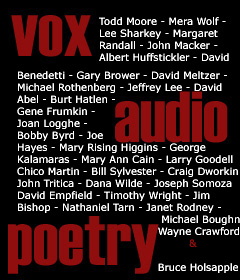
Spontaneous Music Ensemble
Low Profile
Emanem / 4031
John Stevens / percussion, cornet, voice, Nigel Coombes / violin, Colin Wood / cello, Roger Smith / guitar
Nobody made music quite like John Stevens. He had that quality which a lot of British free improvisors of his generation had and still have — an incredible capacity for focusing and never playing down to the audience — but his personal vision was so downright peculiar that, at first, performances like these can sound more than a little bloody-minded. Yet if anyone has ever managed to record the sound of sheer, unbridled pleasure, the Spontaneous Music Ensemble were probably sitting in front of the mike. They spawned many imitators but few equals, and their music still feels fiercely individual.
Much of this is down to Stevens’ now-legendary approach. He seemed above all to love the snap, crackle and pop of the little kits he played; the hard crack of percussion, the impact. His drums never sang like so many free jazzers’ did, and that was hard on his first listeners. You can hear it here, too, the way he swats loudly at that tinny snare instead of doing something “tasteful”. There was never anything “tasteful” about John Stevens’ drumming, and that’s one of its strongest points. Because his sense of the boiling, unpulsed flow of free improv is impeccable at every turn, his playing never sounds random or even thoughtless. Just for the fact that this disc is another opportunity to hear Stevens behind a kit, it can hardly fail.
The long piece here — prefaced by a brief out-take from earlier in the set — is a live performance by the short-lived quartet incarnation of SME. At this stage (1977) Coombes has a fairly scalar approach, Colin Wood is all over the cello like a rash but Smith is still finding his own sound. It’s a towering piece of music, all Bartockian strings and wild percussion (from both Stevens and Smith, whose guitar for the most part is a noise-source here), moving through different combinations of sounds which hold the attention over the full half-hour. Wood and Coombe have a tendency towards drones and quasi-tonal ideas which is unusual, buried as it is within the spikiness to which we’re more accustomed.
That aspect is heightened when Stevens picks up the cornet. He wasn’t a great cornettist — and there are too many stories of him turning up for gigs with only the brass insrument, leaving the promoter running around trying to find him a drum kit, for none of them to have been true — but he used it effectively. On the final track, he gets to stretch his chops out a little, and while it’s hardly breathtaking it’s not embarrasing either. His voice is another thing; as with the cornet, his preference is for sustained drones. His voice sounds as if he might have been influenced by Tibetan chanting, though it doesn’t use the overtone techniques. It has a crudeness which contrasts with his weirdly mercurial drumming, and one wonders whether that lifetime attachment to percussive sounds had something to do with the way he blew his horn, and the way he sang.
A further 35 minutes, spread over two tracks, is given over to the same line-up but without Colin Wood. Although Wood is missed, it’s nice that Smith was able to come to the front a little more. Perhaps he also had the added confidence from the fact that his playing had matured enormously in the intervening years, these tracks being from 1984 and ’88. Coombes, too, has grown in this time and the rather pretty scales he was using in ’77 have been replaced, in part, by more timbral ideas. He does, however, start the piece with a wonderfully Ornette-ish melody, almost as if for the benefit of listeners to this CD. As if to say, Plus ca change, plus c’est la meme chose. The final track, with that cornet feature, is a lovely, mournful piece and the jazziest of the lot. Smith gets to stretch out a little more here, too, and the results are very pleasant.
In the hagiography of early British improv, Stevens is pretty close to being St Peter, the first Pope of free percussion, with his enigmatic epigrams and little compositions which have sustained many a desultory workshop. Let’s not enter into that; Stevens did make some less-than-essential recordings, and some of his projects were not so inspired as others. SME, though, was his baby. It was possibly the purest expression of what he was all about. “Pure” may seem like a strange adjective to attach to this music, which is surprisingly diverse, taking in classical, jazz and world folk musics, but it’s pure John Stevens of an ecstatically good vintage. Richard Cochrane



Leave a Reply